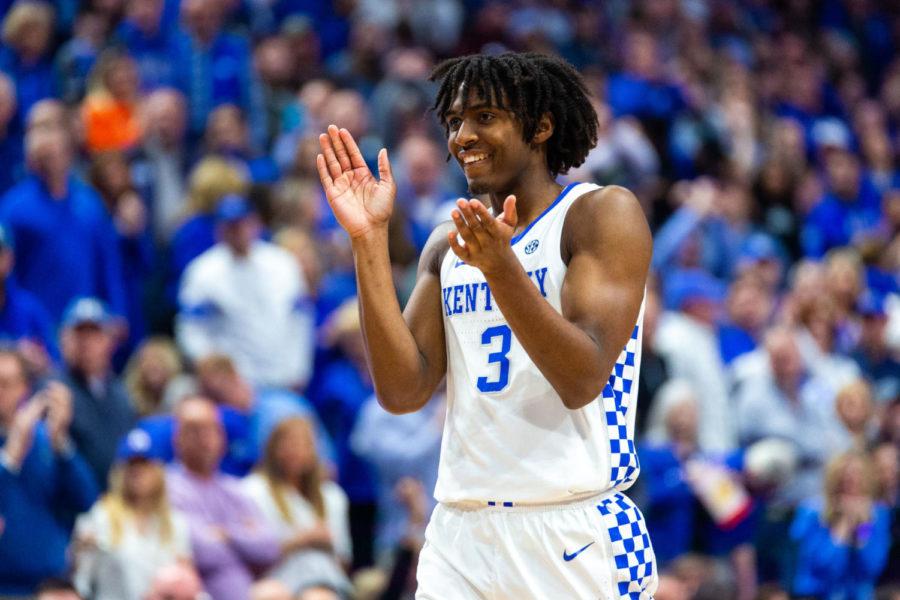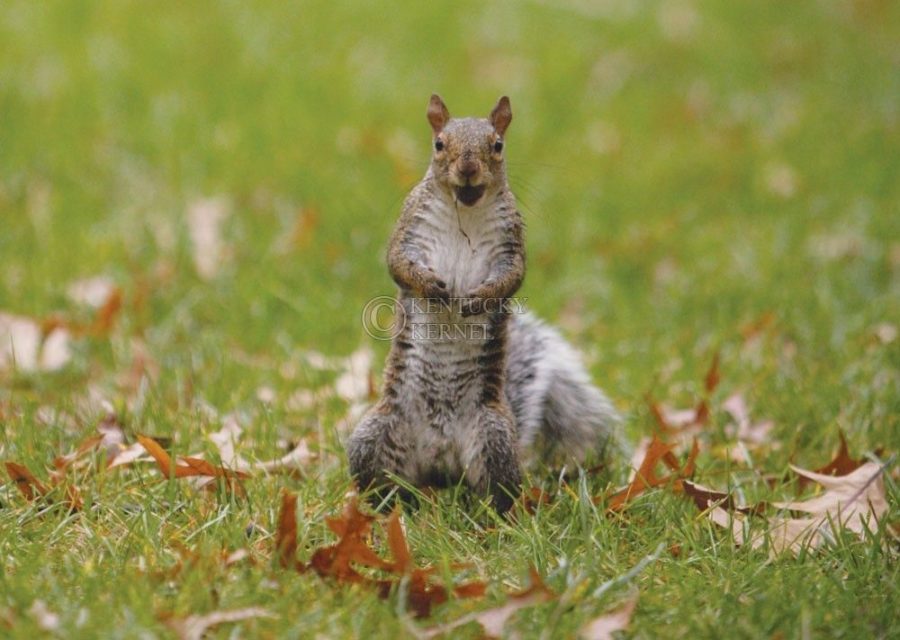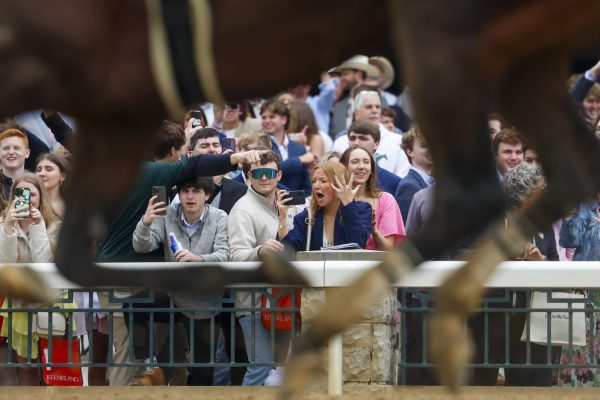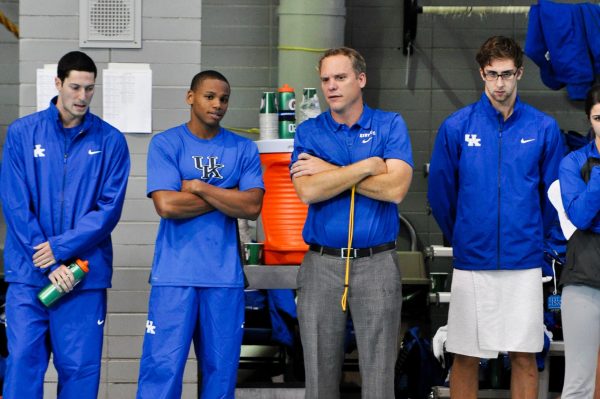Squirrels on campus: Fun critters until they cause serious damage
October 26, 2011
Campus squirrels are a breed all their own.
Like fuzzy brown missiles, they come darting out of bushes in hopes of finding their next acorn to victimize, leaving the remains for campus passers-by to walk on, trip over and crush with their bicycles.
Students and faculty have shared their run-ins with these fearless fur balls, and whether they are silly or serious stories, squirrels on campus seem to have a way of making a lasting impression.
“My freshman year I was walking to class down by fraternity row when a girl in front of me walks up to a trash can to throw a bottle away, and it was like this squirrel was just waiting for her in there,” Landon Antonetti, an art studio and photography senior, said. “When the bottle went in, the squirrel came flying out straight into the side of her head. Maybe the squirrel wanted payback for getting hit in the side of the head with a bottle.”
Architecture graduate Warren Weaver said he saw a squirrel survive a long fall from the top of a tree while walking to class.
“My friend pointed out this squirrel hanging from a high tree limb,” he said, “so we stopped and watched it when all of a sudden it dropped like 30 feet then hit the ground and took off running. We were shocked it lived.”
Alex Brown, a film and video production senior, compared the squirrels on campus to the honey badgers, who are the focus of a recent YouTube video sensation which portrays the honey badger as “the most fearless animal in the world.”
So what is it that makes these squirrels so bold?
A research project done by students at Miami of Ohio University found urbanization has a big impact on the gutsiness of campus critters.
The students explored two different areas that squirrels inhabit, one being campus and the other a nearby wooded park, to see which squirrels would be better adapted to humans.
“After collecting all the data, we found that squirrels on main campus allowed us to approach them to a point 9.2 feet away on average,” the study, called The Impact of Humans on the Domestication of Squirrels, found. “The squirrels in the park allowed us to approach them to a point 16.9 feet away on average.” The study is available at jrscience.wcp.muohio.edu.
This acquired bravery isn’t always in the squirrels’ favor, though.
In 2007, squirrels caused four power outages in a two-month period, according to a December Kernel article of that year.
UK Physical Plant Director Kevin Kreide said that right after these incidents happened, $150,000 of utility money was spent on guards to prevent squirrels from shorting the power.
UK normally averages about one outage a year, so the drastic increase in 2007 is what prompted them to install the guards, Kreide said.
“They try to get into our substations and they’ll crawl across the electrical bus and short it out, which causes a system failure,” he said.
The guards cover about 95 percent of the substations, Kreide said, because there was one area they could not put them up.
“A squirrel managed to get into that area, but since we’ve put them up, we’ve only had that one incident happen in about three years,” he said.
With the additional safety guards to keep squirrels from climbing into electrical stations on campus, they are less of a nuisance and more of a spectacle for students these days.
One thing that’s for sure is these cheeky little rodents are always going to be a part of UK’s campus life.
























































































































































